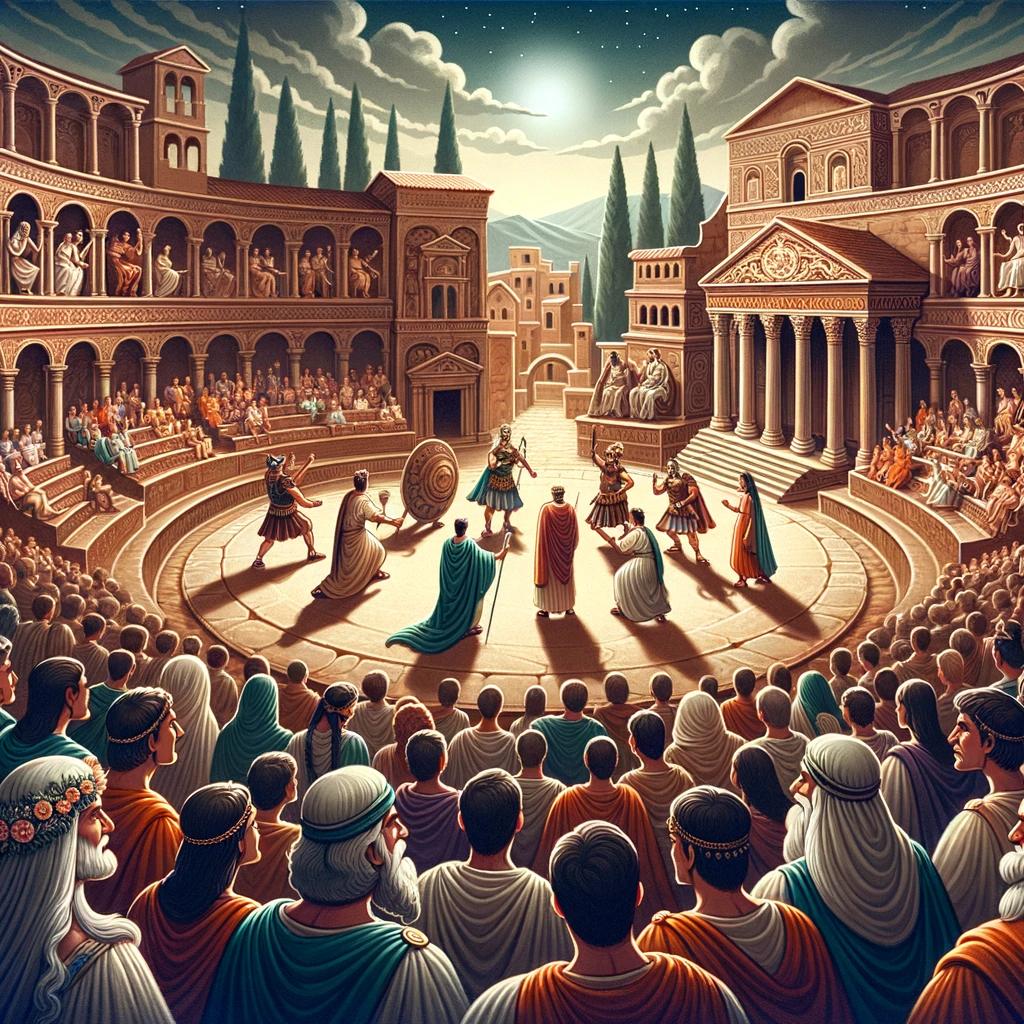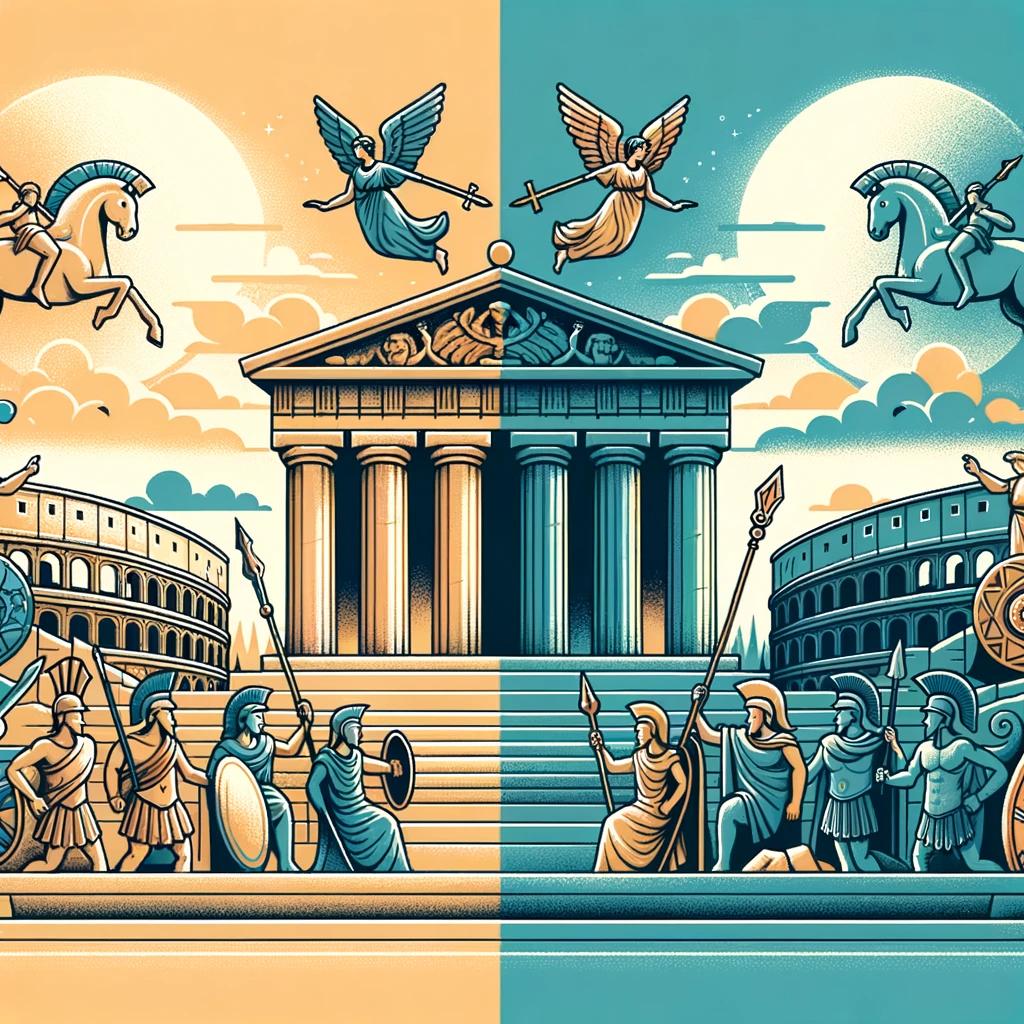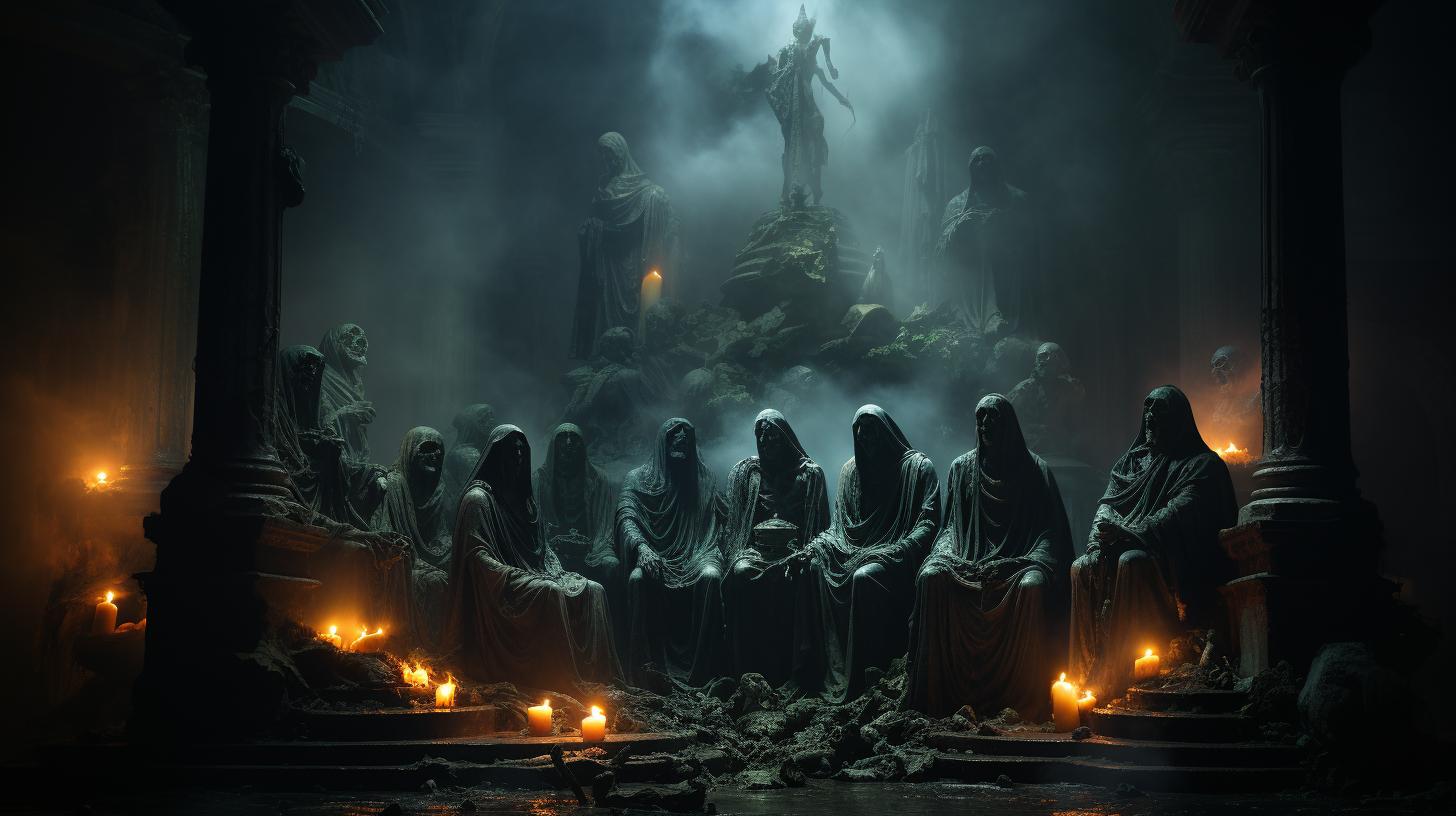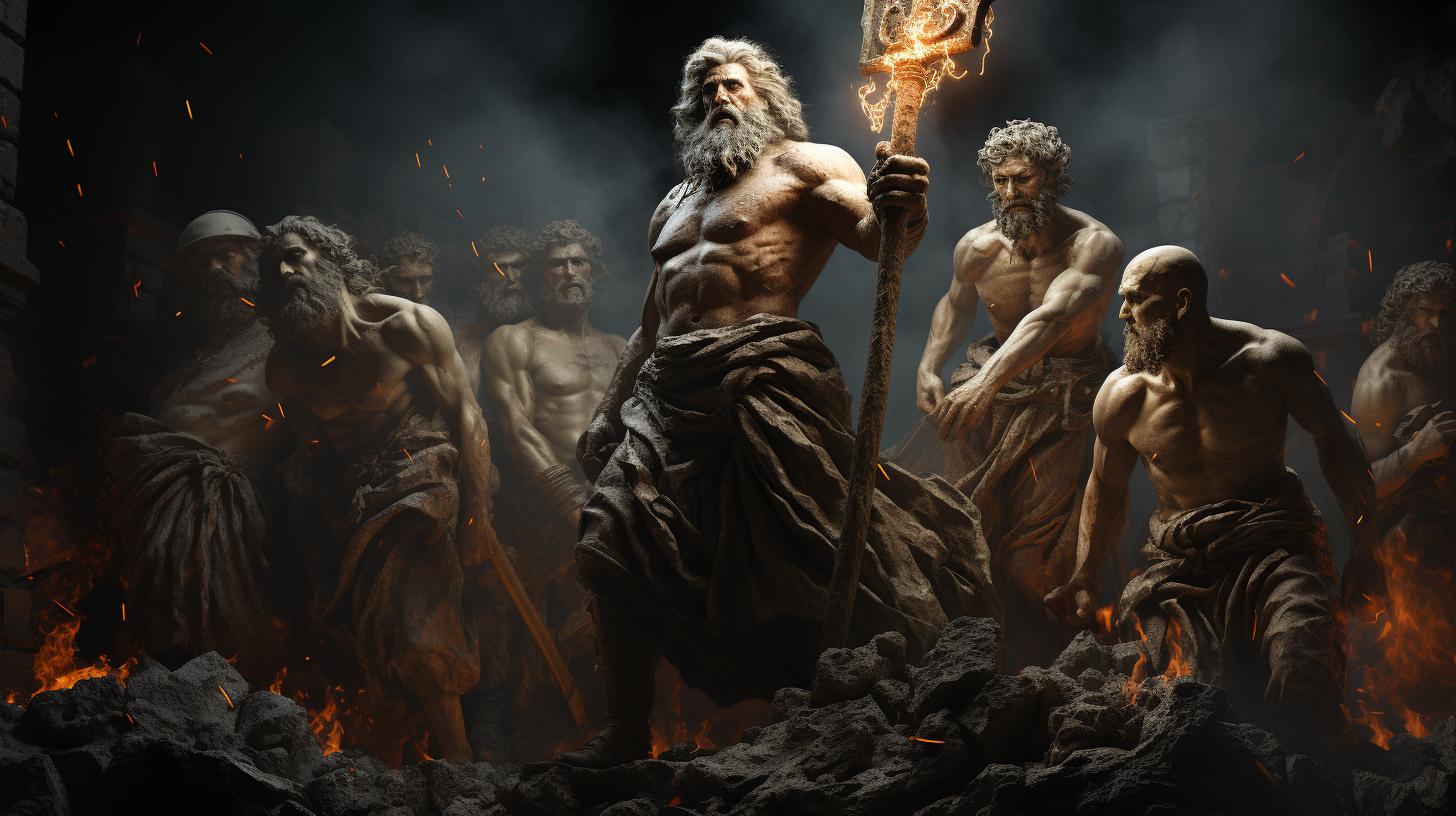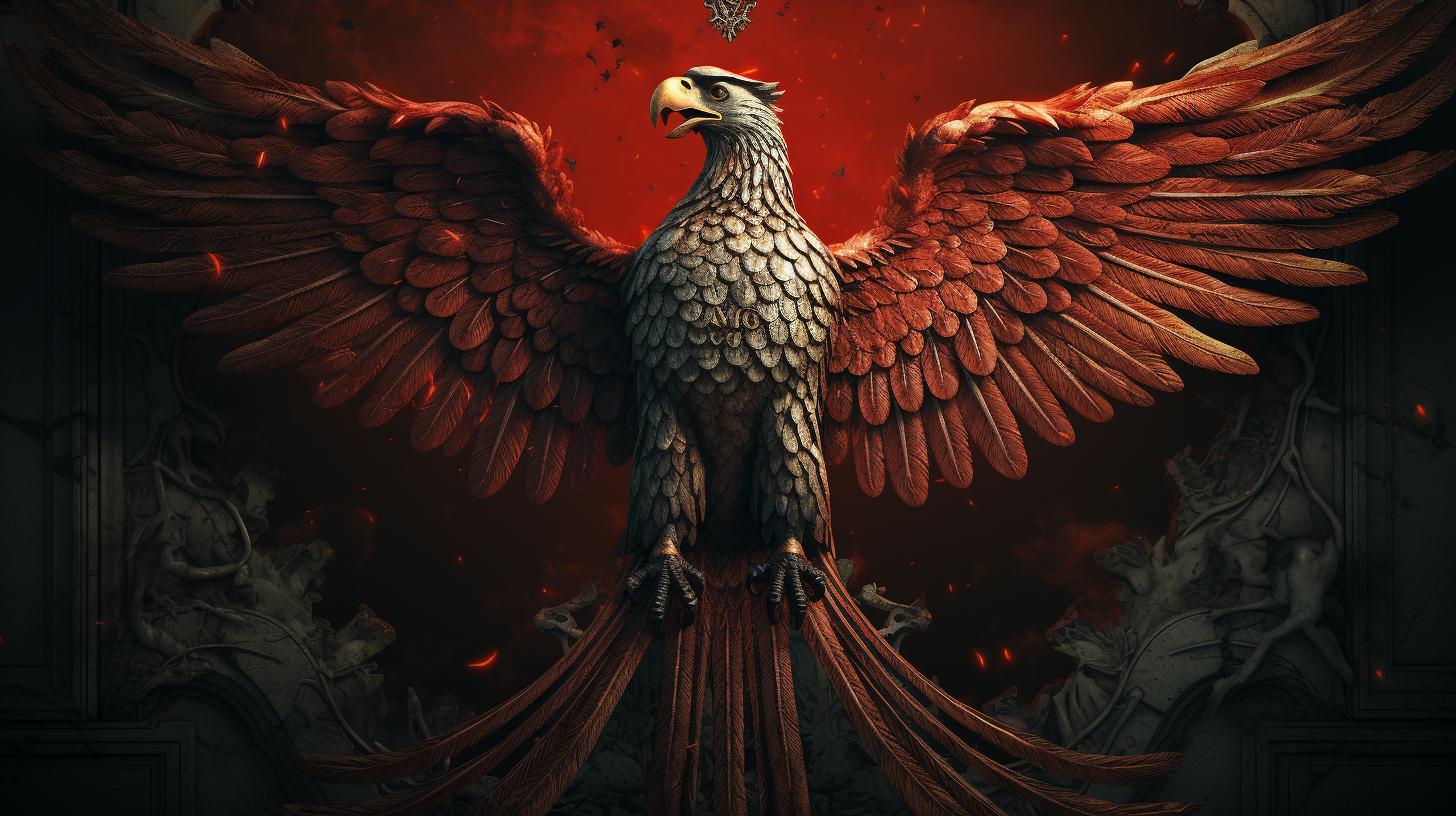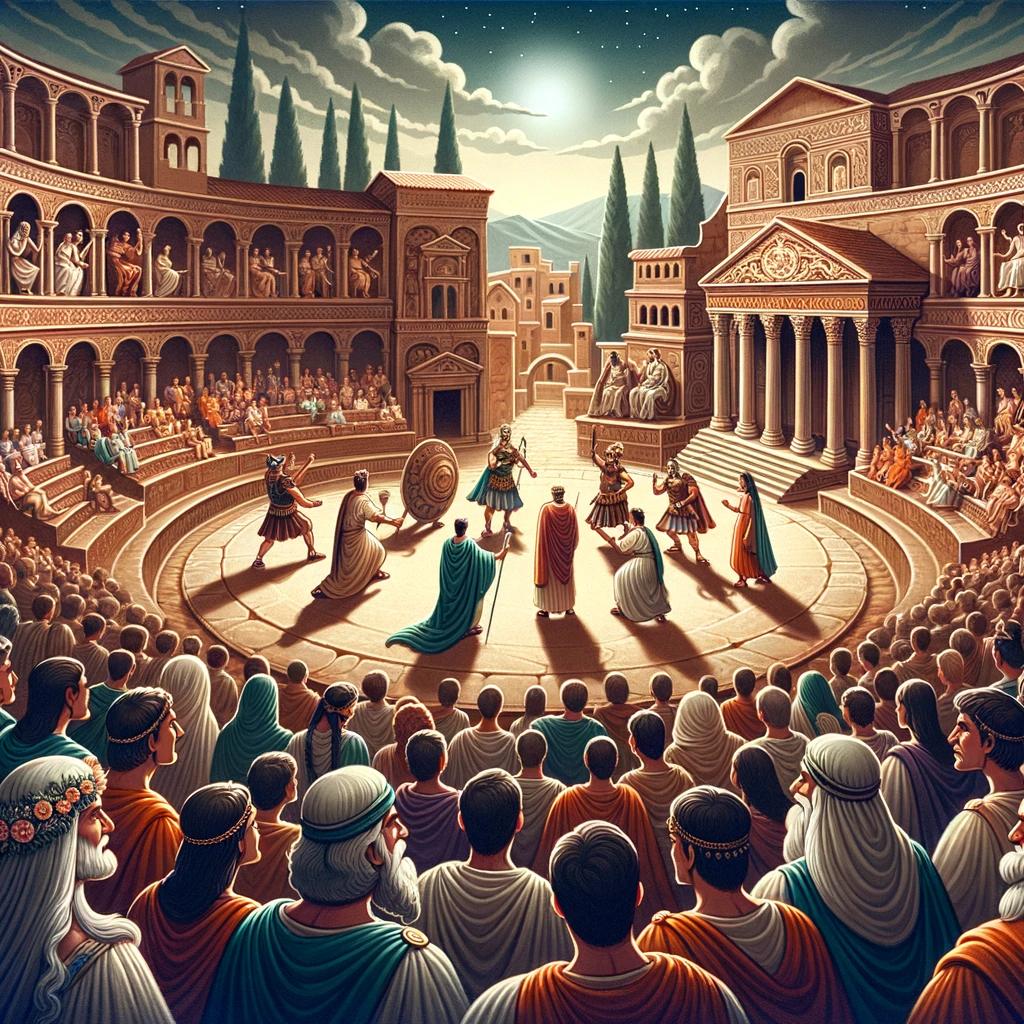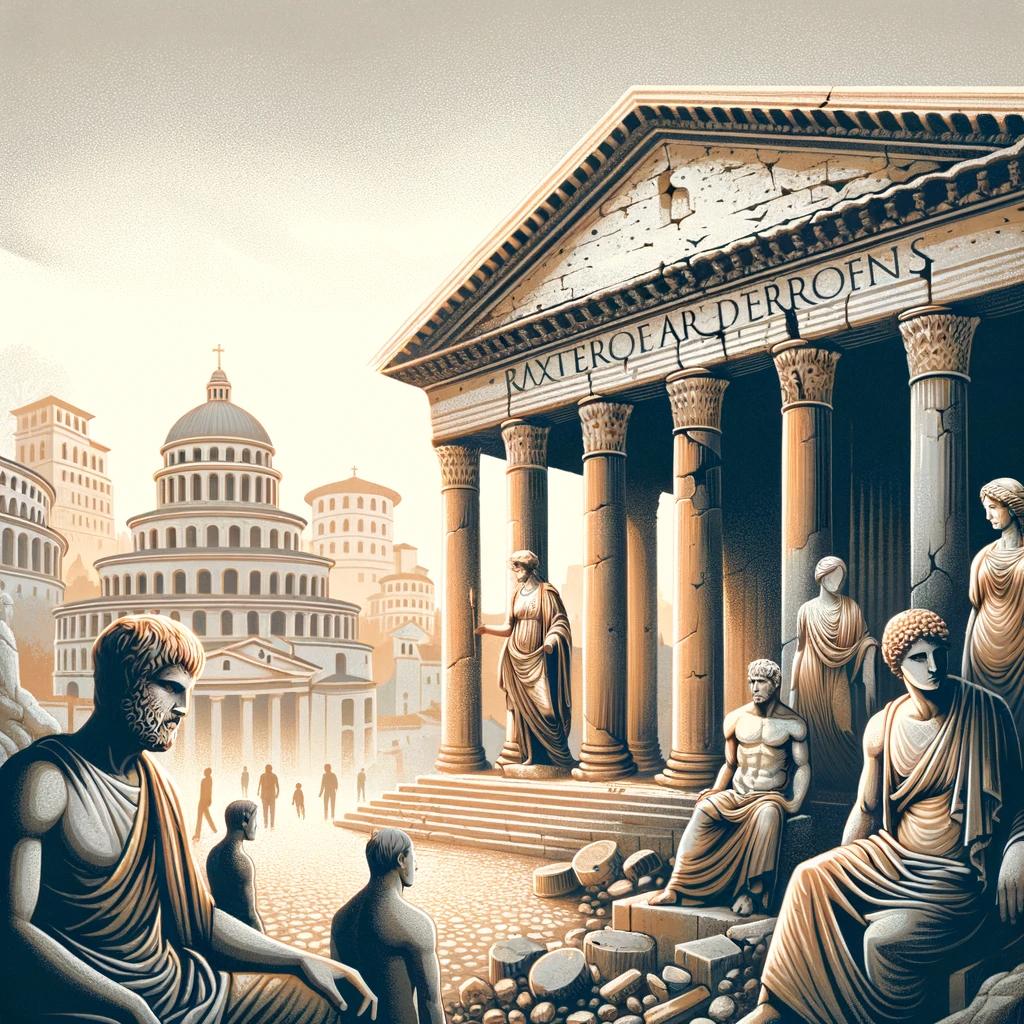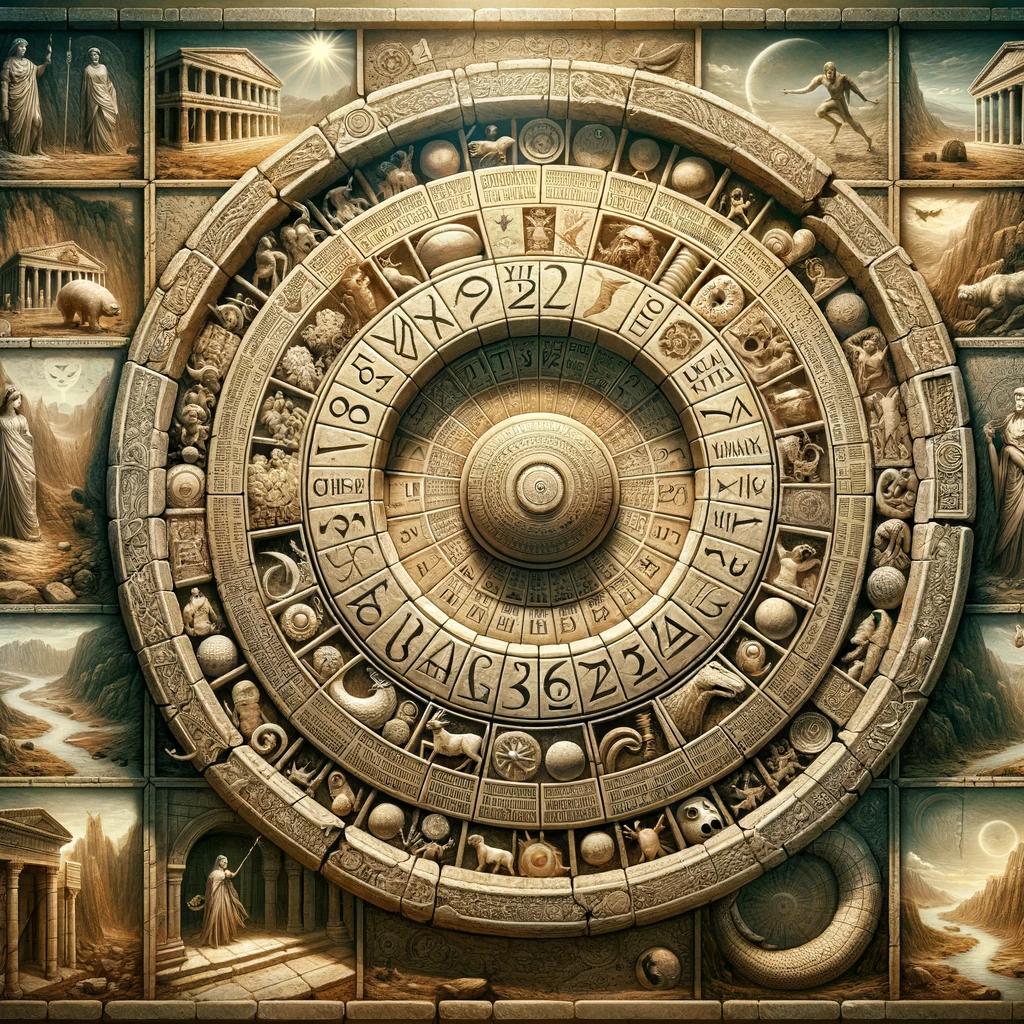Exploring the Significance of Roman Myths in the Ancient Roman Culture
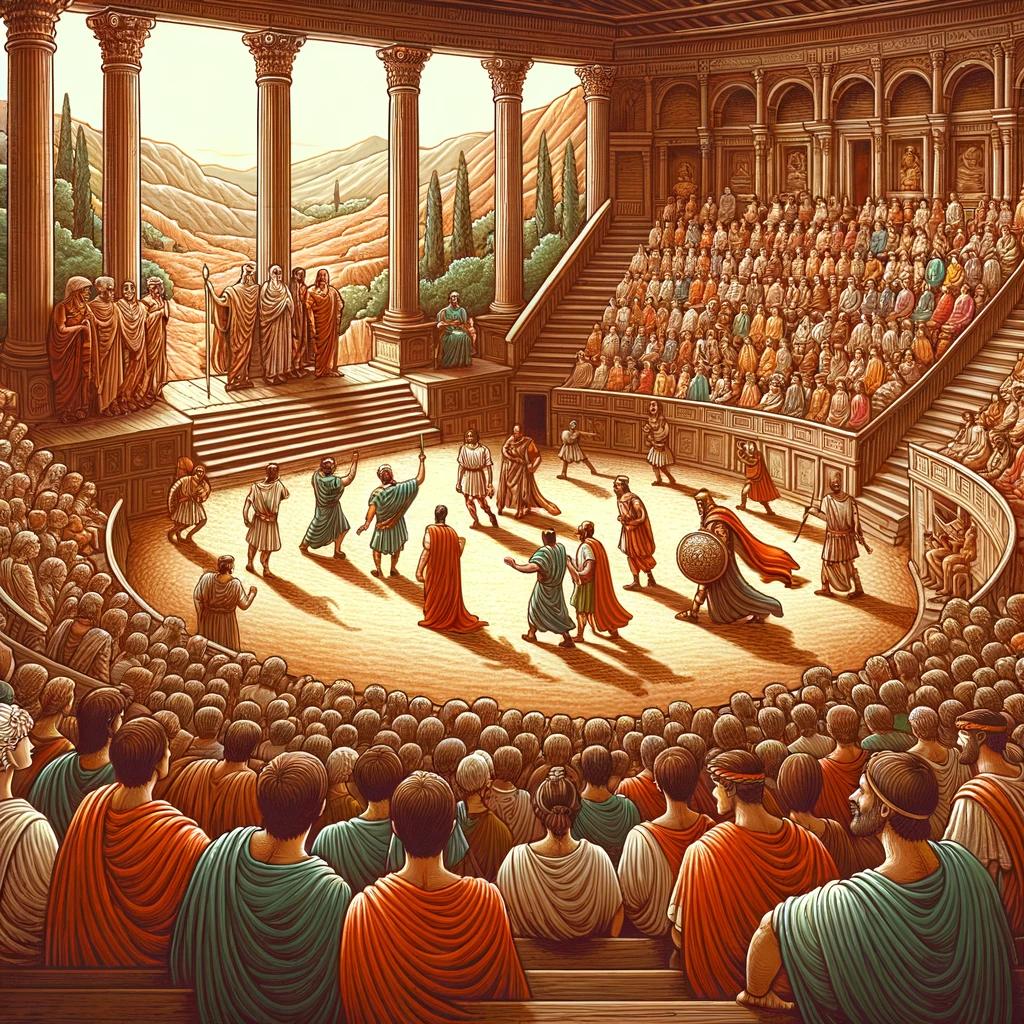
Myths played a significant role in Roman culture, serving various purposes in society. Initially adopting Greek mythology and incorporating elements from Etruscan religion, Roman myths served to explain Rome’s history, teach moral values, and shape cultural ideals.
These myths were closely intertwined with Roman religion, with a wide pantheon of gods and goddesses worshipped through rituals and offerings. Literary works such as Ovid’s ‘Metamorphoses’ portrayed Roman mythology, blurring the lines between myth and history.
Over time, with the rise of Christianity as the state religion, the relevance of Roman myths gradually faded.
The Importance of Myths in Roman Culture
Roman culture was deeply intertwined with mythology, which played a significant role in shaping their beliefs, practices, and social norms. The myths of ancient Rome served multiple purposes and contributed to the collective identity of the Roman people.
Adoption of Greek Mythology in Rome
Greek mythology heavily influenced Roman culture, with the Romans adopting and adapting the gods, stories, and traditions from the Greeks. This cultural borrowing allowed the Romans to relate to and understand their own world through the lens of Greek mythology.
The tales of Greek gods such as Zeus, Hera, and Apollo were reimagined with Roman names and assimilated into their religious and cultural practices.
Influence of Etruscan Religion on Roman Mythology
In addition to Greek mythology, the Romans also drew inspiration from the Etruscan religion, which was native to the region of Etruria in central Italy.
The Etruscan gods and their associated myths were incorporated into Roman mythology, adding new layers of meaning and symbolism to the existing pantheon. This fusion of beliefs enriched Roman mythology with a diverse array of deities and narratives.
By incorporating both Greek and Etruscan elements, Roman mythology became a unique blend of different cultural influences, reflecting the complex nature of Roman society and its interactions with neighboring civilizations.
Exploring the Role of Myths in Roman Society
Mythology played a significant role in shaping the fabric of Roman society.
It served as a powerful tool for explaining the origin and history of Rome, providing a sense of identity and purpose. The myths served as a shared narrative, connecting the people to their past and establishing a sense of collective heritage.
Mythology as a Tool for Explaining the Origin and History of Rome
Myths were instrumental in recounting the legendary founding of Rome, exemplified by the tale of the twin brothers Romulus and Remus, raised by a she-wolf and ultimately establishing the city. These narratives provided a mythological backdrop that solidified the Roman identity and instilled a sense of pride.
Through these myths, the Romans sought to explain the rise and fall of their civilization, attributing their successes and failures to the favor or disfavor of the gods. The legends surrounding influential historical figures, such as Julius Caesar or Augustus, often incorporated mythical elements, elevating their feats to the realm of divine intervention.
Moral and Cultural Values Portrayed in Mythological Stories
Beyond historical accounts, myths were also a means of conveying moral and cultural values within Roman society. Mythological stories often featured gods, goddesses, and mortal heroes navigating complex moral dilemmas, showcasing virtues such as bravery, loyalty, and piety.
These narratives provided a framework for guiding proper behavior and promoting societal norms. For instance, the story of Aeneas, the Trojan hero, emphasized the importance of duty and reverence for one’s homeland, aligning with the values of Roman patriotism and loyalty.
Moreover, myths served as cautionary tales, warning against hubris and excessive ambition. The myth of Icarus, who flew too close to the sun, teaches the consequences of overreaching and ignoring limitations, promoting humility and moderation.
Overall, the role of myths in Roman society extended beyond entertainment. They served as a vehicle to explore the historical roots of Rome, instill cultural and moral values, and foster a collective identity based on shared stories and beliefs.
The Connection Between Roman Myths and Religion
The myths of ancient Rome were deeply intertwined with their religious practices and beliefs. This section explores the connection between Roman myths and religion, highlighting the worship of Roman gods and goddesses along with the rituals and offerings associated with Roman mythology.
Worship of Roman Gods and Goddesses
In Roman society, the worship of gods and goddesses played a central role. The Romans believed in a pantheon of deities, each with their own distinct specialties and attributes. The most prominent among these gods was Jupiter, the king of gods and the god of thunder and lightning.
His wife, Juno, was revered as the protector of Rome.
Other significant gods included Mars, the god of war, Mercury, the messenger of the gods, Neptune, the god of the sea, Venus, the goddess of love and beauty, and Diana, the goddess of the hunt.
The Romans engaged in religious ceremonies and made offerings to these gods and goddesses to seek their favor, protection, and blessings.
Rituals and Offerings in Roman Mythology
Roman mythology was accompanied by various rituals and offerings that were performed by the Romans. These rituals were conducted to honor the gods and foster a connection between the mortal realm and the divine.
Examples of such rituals included sacrifices, prayers, processions, and festivals.
Offerings to the gods often consisted of animal sacrifices, food, wine, and incense. These offerings were seen as a way to show devotion, express gratitude, and seek divine guidance.
Temples and sanctuaries were built to house the statues and representations of the gods, becoming focal points for religious practices and ceremonies.
The Romans believed that by faithfully performing these rituals and offering sacrifices, they could establish a harmonious relationship with the gods, ensuring prosperity, protection, and a favorable outcome in various aspects of life.
In conclusion, the connection between Roman myths and religion was deeply intertwined. The worship of gods and goddesses formed a significant part of Roman society, with rituals and offerings being key elements of religious practices.
Understanding the role of mythology in religious beliefs provides valuable insights into the cultural and spiritual aspects of ancient Roman civilization.
The Literary Depictions of Roman Mythology
The rich tapestry of Roman mythology finds its vivid expression in various literary works that have withstood the test of time. These masterpieces not only entertain but also offer profound insights into the complex realm of Roman myths and beliefs.
Ovid’s ‘Metamorphoses’ and its Significance
Ovid’s ‘Metamorphoses’ serves as an influential cornerstone of Roman mythology. This epic poem, consisting of fifteen books, explores the themes of transformation and mythological narrative. Through the exploration of various mythical characters and their metamorphoses, Ovid crafts a compelling portrayal of Roman legends and beliefs.
‘Metamorphoses’ embraces the essence of Roman mythology by showcasing the interplay between mortals and gods, the consequences of hubris, and the intricate nature of divine intervention. Ovid’s work not only captures the imagination but also highlights the moral and cultural values held dear by the Romans.
As we delve into ‘Metamorphoses,’ we witness the origins of significant myths such as the creation of the world, the tale of Apollo and Daphne, and the story of Pyramus and Thisbe.
Through these narratives, Ovid masterfully captures the essence of Roman mythology, portraying the divine and mortal interactions that shaped the Roman cultural landscape.
Other Notable Works on Roman Mythology
Aside from Ovid’s magnum opus, other literary works continue to provide valuable insights into the intricate tapestry of Roman myths. These works provide different perspectives, adding depth and richness to our understanding of Roman mythological beliefs.
- The ‘Fasti’ by Ovid: In this poetic exploration of Roman festivals, Ovid delves into the mythological origins and significance of various religious celebrations, offering a unique lens through which to contemplate Roman culture and its ties to mythology.
- The ‘Aeneid’ by Virgil: Virgil’s magnum opus depicts the legendary hero Aeneas and his journey from the ruins of Troy to the eventual founding of Rome.
In this epic poem, Virgil weaves together myth, history, and prophecy, shaping the identity and destiny of Rome through the lens of mythology.
- Livy’s Early History: Livy’s compelling account of Rome’s early history intertwines historical events with mythological narratives, illustrating the significance of mythology in shaping Rome’s collective identity and sense of origin.
- Dionysius’ ‘Roman Antiquities’: This extensive work provides valuable insights into the mythological foundation and legendary past of Rome, shedding light on the mythical figures and stories that permeated Roman society.
These literary depictions serve as a testament to the enduring fascination with Roman mythology and its profound influence on various aspects of Roman life, from religious practices to cultural beliefs.
The Historical Interpretation of Roman Myths
Understanding the historical interpretation of Roman myths is crucial in unraveling the complex relationship between myth and history in ancient Rome. Through these myths, ancient Romans sought to establish a historical foundation while incorporating elements of their religious beliefs and cultural practices.
Two key aspects that shaped the historical interpretation of Roman myths were the blurred lines between myth and history and the role of mythology in interpreting divine will.
Blurring the Lines Between Myth and History
In Roman society, the distinction between myth and historical events was often blurred.
Myths served as a means of explaining the origins and history of Rome, intertwining legendary figures with real-life events. For example, the myth of Romulus and Remus, the twin brothers raised by a she-wolf, provided a colorful narrative for the foundation of Rome.
The Romulus myth became ingrained in Roman identity, despite its mythical elements, and was considered a factual account by many.
This blurring of myth and history allowed Romans to create a sense of continuity and legitimacy for their society.
It allowed them to connect present events and individuals to their legendary past, reinforcing their cultural heritage and elevating their status in the ancient world.
Mythology and the Interpretation of Divine Will
Another significant aspect of the historical interpretation of Roman myths was their role in understanding and interpreting divine will.
Romans believed that gods and goddesses played an active role in their lives and that interpreting their desires was crucial for religious and societal well-being.
The myths associated with various gods and goddesses provided insights into their characteristics, preferences, and will.
For instance, understanding Jupiter, the king of gods, and his relationship with other deities helped Romans make sense of natural phenomena such as thunder and lightning. The interpretation of bird signs, known as augury, was another important aspect of identifying divine will.
Augurs, priests specialized in interpreting bird behavior, observed and analyzed the flight patterns and calls of birds to decipher divine messages.
This interaction between mythology and divine will shaped the religious practices and rituals of ancient Romans.
Sacrifices and offerings were made to appease the gods and seek their favor, emphasizing the importance of mythology in guiding religious customs.
In conclusion, the historical interpretation of Roman myths reveals the intertwined relationship between myth and history in ancient Rome.
Blurring the lines between myth and history allowed for the creation of a cohesive narrative for the foundation of Rome, while mythology’s role in interpreting divine will guided religious practices and rituals.
Understanding these aspects enhances our understanding of the rich cultural and religious tapestry of ancient Roman society.
Decline of Roman Myths: The Shift towards Christianity
The rise of Christianity marked a significant turning point in Roman society, leading to the eventual decline of Roman myths. This section explores the shift towards Christianity as the state religion and the resulting fading relevance of Roman myths.
Embracing Christianity as the State Religion
During the 4th century AD, Christianity gained increasing influence and support in the Roman Empire. The Emperor Constantine played a crucial role in this shift by legalizing Christianity and eventually embracing it himself.
With the establishment of Christianity as the state religion, the focus of religious devotion shifted away from Roman myths and towards Christian beliefs and practices.
This transition had far-reaching consequences for Roman society.
The adoption of Christianity as the state religion led to the institutionalization of Christian rituals, clergy, and religious authorities, which gradually replaced the traditional priesthood and rituals associated with Roman myths.
The new Christian ideology emphasized monotheism and the worship of one God, which challenged the polytheistic beliefs of Roman mythology.
Fading Relevance of Roman Myths in Roman Society
As Christianity gained dominance, the relevance and popularity of Roman myths diminished. The focus of cultural and intellectual pursuits shifted towards Christian theology and philosophy, leaving little room for the continued exploration and promotion of Roman myths.
The fading relevance of Roman myths in Roman society can also be attributed to the Christian condemnation of pagan practices and beliefs. Christian leaders actively discouraged the worship of Roman gods and goddesses, considering them as false idols.
As a result, many temples dedicated to Roman deities were either destroyed or repurposed for Christian worship, further erasing their presence in everyday life.
Additionally, Christian narratives and teachings provided alternate explanations for the origin of the Roman people and their history, undermining the significance of traditional mythological accounts.
The Christian belief in a divine plan and providence shifted the focus from mythological interpretations of divine will to the interpretation of God’s will through scripture, prayer, and moral conduct.
Over time, Roman myths and their associated rituals became marginalized, relegated to the realm of folklore and storytelling rather than being actively practiced and revered as they once were.
The integration of Christianity into the fabric of Roman society led to the gradual decline and ultimate abandonment of Roman myths as a central aspect of religious and cultural life.
- The rise of Christianity as the state religion
- The Christian condemnation of pagan practices and beliefs
- The marginalization and fading relevance of Roman myths
.

